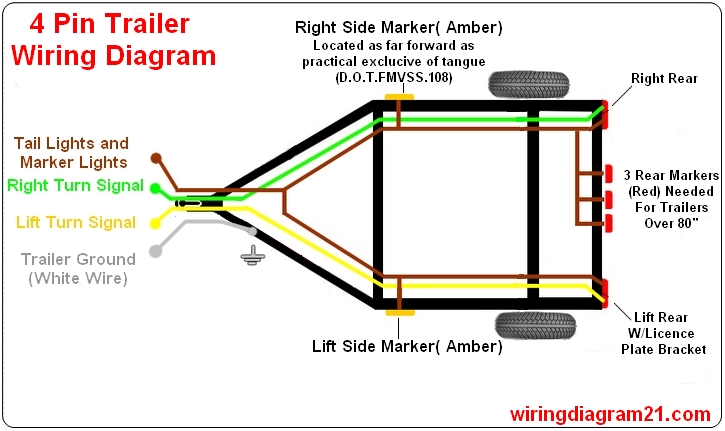Unlocking Trailer Wiring: Your 5-Pin to 7-Pin Adapter Guide
Ever found yourself staring at the back of your vehicle, a 5-pin connector on your tow hitch, and a 7-pin connector on your trailer, wondering how to bridge the gap? You're not alone. The world of trailer wiring can seem daunting, but understanding the 5-pin to 7-pin trailer adapter wiring diagram is key to a safe and enjoyable towing experience.
This comprehensive guide will demystify the 5-pin to 7-pin adapter, providing you with the knowledge and confidence to connect your trailer correctly. We'll explore the wiring diagram, its function, and why it's crucial for your towing setup. From basic connections to troubleshooting common issues, we'll cover it all.
Essentially, a 5-pin to 7-pin trailer adapter acts as a translator between your vehicle's 5-way connector and your trailer's 7-way connector. It allows the electrical signals from your vehicle – such as brake lights, turn signals, and running lights – to reach the corresponding lights on your trailer. Without the proper adapter and wiring configuration, these signals wouldn't be transmitted, rendering your trailer lights non-functional and creating a safety hazard.
The history of trailer connectors and their evolution from simpler systems to the more complex 7-way system reflects the increasing demands of modern trailers. Early trailers often had basic lighting needs, handled by fewer wires. As trailers became more sophisticated, with features like electric brakes, reverse lights, and auxiliary power, the need for additional wiring and connectors grew, leading to the development of the 7-way system.
A proper 5-pin to 7-pin trailer adapter wiring configuration is vital for safety and legality. It ensures your trailer lights function correctly, signaling your intentions to other drivers and preventing accidents. Incorrect wiring can lead to malfunctioning lights, potentially resulting in traffic violations and, more importantly, dangerous driving situations.
One benefit of understanding the wiring diagram is the ability to troubleshoot problems yourself. If a trailer light isn't working, you can pinpoint the issue within the wiring rather than taking it to a mechanic, saving you time and money. Another advantage is the ability to customize your setup. With a thorough understanding, you can add additional circuits for features like reverse lights or auxiliary power.
A typical 5-pin to 7-pin adapter adds circuits for electric brakes and a 12V auxiliary power line. The wiring diagram dictates which wire from the 5-pin connector corresponds to each function on the 7-pin connector. This ensures correct signal transfer for lights and trailer brakes.
Before connecting, always consult your vehicle and trailer manuals for specific wiring information. Use a tester to ensure correct wire function.
Advantages and Disadvantages of 5-Pin to 7-Pin Adapters
| Advantages | Disadvantages |
|---|---|
| Enables use of trailers with 7-way connectors | Can be complex to install if wiring is not understood |
| Provides power for electric brakes | Requires careful matching of wiring to avoid damage |
| Offers 12V auxiliary power for trailer accessories | Adapter can be a point of failure if not properly maintained |
Best Practices:
1. Always consult your vehicle and trailer manuals.
2. Use a circuit tester to verify connections.
3. Use dielectric grease on connections to prevent corrosion.
4. Securely mount the adapter to prevent damage.
5. Regularly inspect the wiring for wear and tear.
Frequently Asked Questions:
1. Why do I need an adapter? - To connect a 7-pin trailer to a 5-pin vehicle connector.
2. What does each wire control? - Consult a wiring diagram for specific functions.
3. How do I troubleshoot lighting issues? - Use a tester to check continuity and voltage.
4. Can I install the adapter myself? - Yes, with basic wiring knowledge.
5. Where can I find a wiring diagram? - Online resources, trailer manuals, and auto parts stores.
6. What if my trailer brakes don't work? - Check the brake controller and wiring connections.
7. Can I tow a larger trailer with an adapter? - Depends on the vehicle and trailer specifications. Consult your owner's manuals.
8. What is the purpose of the auxiliary power wire? - To power accessories like trailer interior lights or a winch.
Tips and Tricks: Label each wire for easy identification during installation and troubleshooting. Use heat shrink tubing to protect wire connections from the elements.
In conclusion, understanding the 5-pin to 7-pin trailer adapter wiring diagram is essential for safe and efficient towing. By taking the time to learn the basics, you can avoid potential hazards, ensure your trailer lights function correctly, and enjoy a worry-free towing experience. This knowledge empowers you to troubleshoot issues, potentially saving you time and money. From ensuring proper connections to utilizing best practices for maintenance, you now have the tools to confidently connect your trailer and hit the road. Don't hesitate to consult resources like online forums, vehicle and trailer manuals, or even seek advice from experienced towers. With a little effort and the right information, you can master the intricacies of trailer wiring and enjoy the freedom of the open road.
Rev up the fun car theme cake topper printable ideas
Chile chico photos a window to patagonias soul
Crafting the perfect apology letter to your best friend













